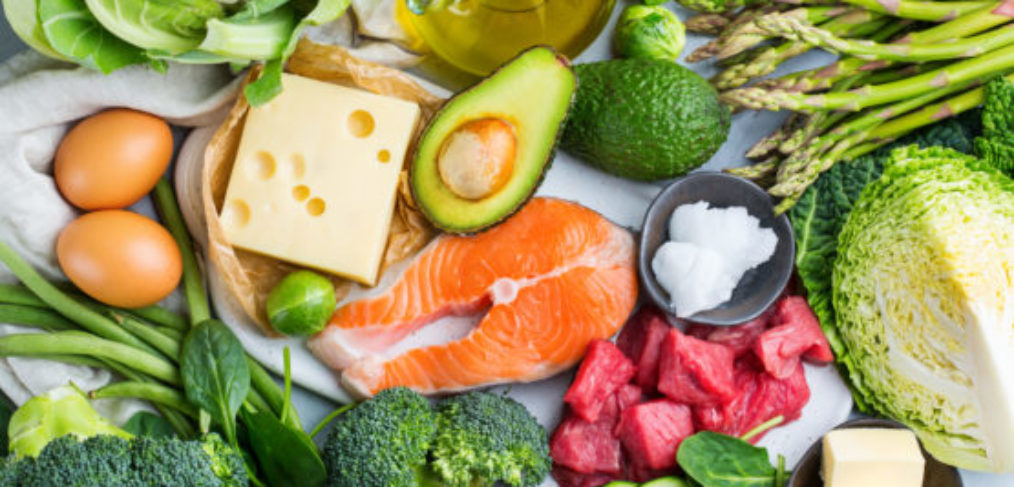Choosing Paleo for Breast Cancer Prevention

October is breast cancer awareness month.
Based on current incidence rates, 12.9% of women born in the United States today will develop breast cancer at some time during their lives (1).
Genetics play a role; BRCA1 and BRCA2 are the most common cause of hereditary breast cancer is an inherited mutation in the BRCA1 or BRCA2 gene. In normal cells, these genes help make proteins that repair damaged DNA. Mutated versions of these genes can lead to abnormal cell growth, which can lead to cancer (2).
Other genes can factor in as well as family history and age.
Lifestyle choices, however, which we can control, also contribute to whether or not a woman (or man, less than 1% of all breast cancers occur in men) develops cancer.
Drinking too much alcohol, becoming overweight or obese and a sedentary lifestyle are all choices which can increase the risk; these are three of the top factors that top the list of many a cancer prevention organization’s guideline.
In addition, two crucial categories that must also be considered are what one puts in their body, and what one puts on it.
Take processed carbohydrate, for example.
A strong correlation was found between breast cancer mortality and sugar consumption (3). A possible connecting link between sugar consumption and breast cancer is insulin. Insulin secretion occurs in response to blood glucose level and could be excessive if the regulatory mechanism is overtaxed by large sugar intake.
Because cancer cells are especially “hungry and hyperactive,” they consume glucose more quickly than non-cancerous cells. With the help of a radioactive compound very similar to glucose that allows detection of the metabolic activity (hungriness and hyperness) of cancer cells, medical professionals are able to see this phenomenon during a PET (Positron Emission Tomography) scan (4).
When refined carbohydrates are eaten, the body increases its output of insulin to help return post-meal blood sugar levels to normal. Failure of insulin levels to return to normal after the blood sugar is cleared indicates insulin resistance and high levels of insulin remaining in the blood. Insulin resistance can result from obesity and inactivity; insulin resistance is associated with higher breast cancer recurrence risk (5).
Simply put: cut out the sugar.
What to focus on?
An authentic Paleo approach.
Which, by the way is not meat-based, but plant based with small portions of properly sourced proteins, thus collectively alkaline forming and key in supporting a body’s ability to thrive.
In an article I wrote for The Paleo Diet (6), I shared the following tips.
(Note that rather than trying to find studies that prove “Paleo prevents breast cancer,” we can discover fact simply by referring to the natural foods that are the essence of the approach.)
Green Tea
Three cups of green tea a day can prevent breast cancer by as much as 50% because of its high EGCG antioxidant content. Squeeze a little lemon into your cup and increase the antioxidant power of your tea.
Garlic
Garlic is a good immunity booster that also has anti-inflammatory properties.
Olive oil, borage oils, and flaxseed oil
Olive oil, borage oils and flaxseed oil contain monounsaturated fat, which can help suppress breast cancer.
Turmeric
Turmeric helps decrease estrogen. As little as one teaspoon a day has been shown to reduce tumor growth. Get your daily dose by mixing it into salad dressings, rice or vegetable dishes.
Cruciferous vegetables
Cruciferous vegetables, such as kale, bok choy and Swiss chard bind estrogen in your GI tract and reduce tumor stimulation. They also detoxify the liver, which helps reduce the toxins flowing through your body that can irritate cells and turn them into early cancers.
Seaweed
Seaweed/Kelp are high in iodine, this is another estrogen reducer.
Vitamin D
Vitamin D (2000 IU) and calcium-rich foods, such as sardines, salmon, milk and cheese are also highly recommended. Or, 15-20 minutes of sunshine every day can help every day can help you in getting your daily dose of Vitamin D, which can prevent tumor metastasis, reduce cancer cells and aid estrogen inhibitors.
Dr. Kristi Funk, a board-certified surgical breast specialist and founder of the Pink Lotus Breast Center discussed these ‘superfoods’ that may help prevent cancer as well as help patients while undergoing treatment in the Ultimate Breast Cancer Prevention Guide said, “All of these combined can decrease your breast cancer risk by up to 50%.”
Notice anything interesting about all the bullet points?
They’re all food. Real, fresh, unadulterated food that also happen to be Paleo-friendly.
Stay tuned for the next post in this two-part series on what you need to know about what you’re putting ON your body and how to make sure it’s not increasing cancer risk.
(1) https://www.cancer.gov/types/breast/risk-fact-sheet
(2) https://www.cancer.org/cancer/breast-cancer/risk-and-prevention/breast-cancer-risk-factors-you-cannot-change.html
(3) https://pubmed.ncbi.nlm.nih.gov/6645999/
(4) https://cancerres.aacrjournals.org/content/69/24_Supplement/MS2-1
(5) https://cancerres.aacrjournals.org/content/77/13_Supplement/232
(6) https://thepaleodiet.com/paleo-breast-cancer-prevention-link





